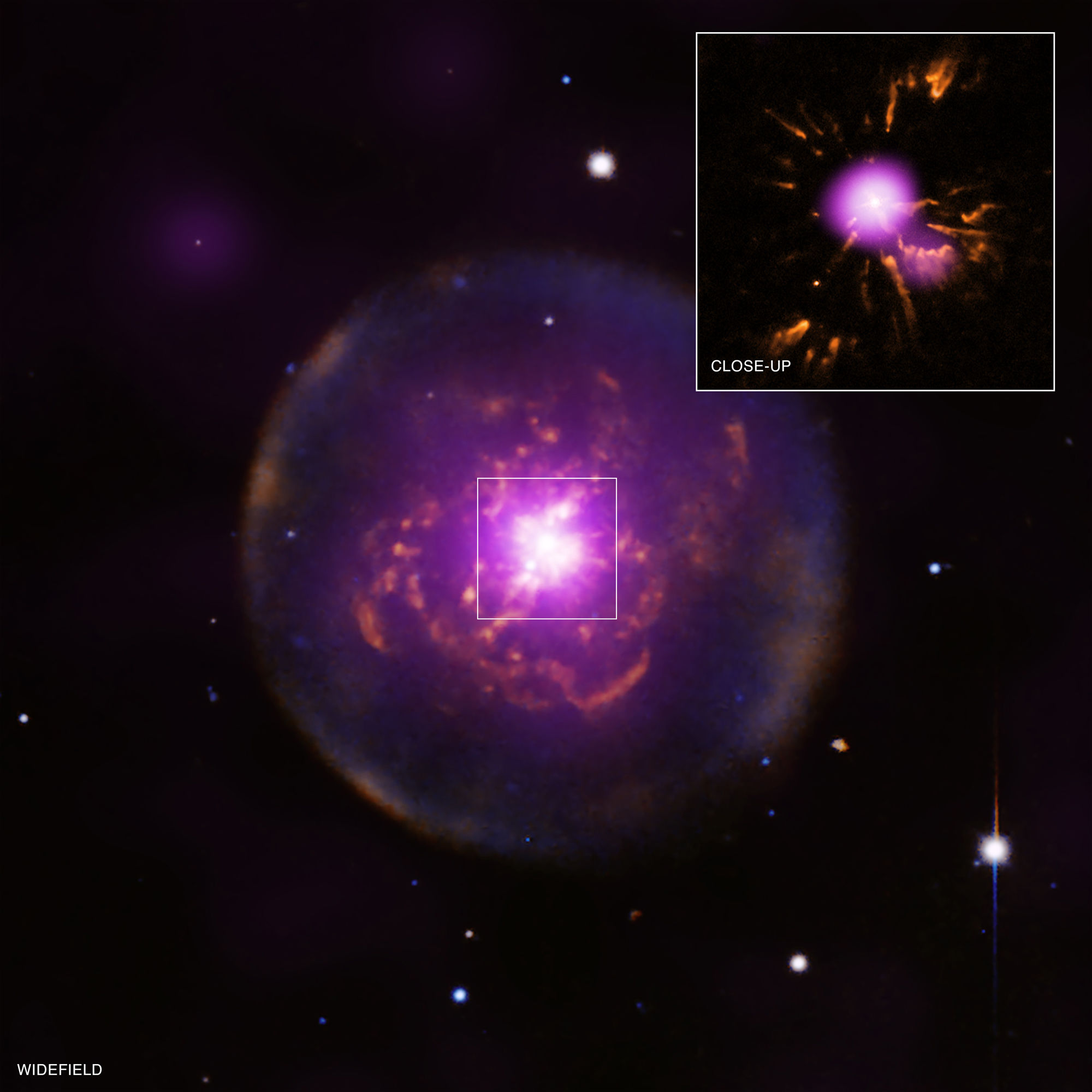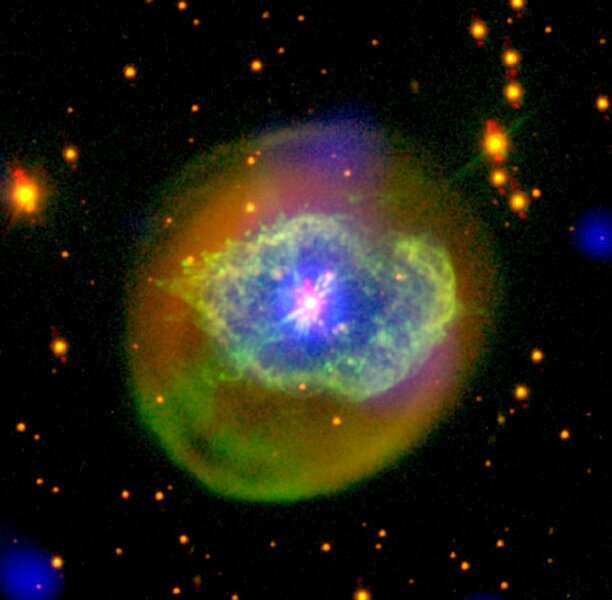Create a free profile to get unlimited access to exclusive videos, sweepstakes, and more!
Abell 30: A star that died, was reborn, then died again

The Universe tends to be slightly more complicated than the stories we tell about it.
For example, it’s quite common for astronomers to talk about how stars like the Sun die. Sure, it’s complicated, but the story goes like this: The star runs out of fuel in its core. The leftover material buried in its core from previous cycles of fusion (helium, carbon, and other elements) starts to contract, getting very hot. This heat gets dumped into the outer parts of the star, which respond by swelling up (gas expands when you heat it) — the star gets bigger. The surface area increases so much that the amount of energy the star emits per square centimeter goes down, so even though it gets very bright it actually gets cooler and turns red — it becomes a red giant.
After a while, the outer layers wind up blowing off, exposing the lower layers to space. The energy from the core pushes on them, too, and the gas there flies away from the star rapidly, slamming into the slower gas expelled when it was a red giant. These colliding winds form fantastic shapes, which glow from both the energy of their collision plus the blast of ultraviolet light coming from the star’s core. That core is small and white-hot, so we call it a white dwarf.
After a few thousand years the winds diffuse, leaving behind the white dwarf. Without a source of energy, it simply cools, eventually turning blue, then red, then black. The star is dead.
That’s the basic story you’ll see in articles, textbooks, and the like. But sometimes, maybe, there’s another step in there. In this case there is one – actually several, basically repeats of the same thing — and while usually ignored, in the case of Abell 30 it becomes important.
What’s Abell 30, you ask? Why, this:
Abell 30 is a planetary nebula, that stage in the star’s life when the two winds are colliding, and the central star is lighting them up like a neon sign. In the big image (showing data from the 4-meter Mayall telescope in optical light in red and in X-rays from XMM-Newton in purple), you can see this. The circular shape on the outside is the red giant wind, expanding away in a spherical shell like a soap bubble (and also slightly brightened along the outer edge as it rams into the thin gas between stars). It’s actually rare to get a nearly perfect circular outer halo like that, so this is neat.
But it’s those tendrils of gas on the inside that are so very interesting. You can see them in the outer halo, but images of the inner region (inset in the image above) using Hubble Space Telescope show tendrils very near the core, and aligned radially, which is unexpected. Overlain on this (shown in purple) is X-ray data from the Chandra X-ray Observatory, indicating some very high-energy processes are going on here.
What astronomers think happened here is that the dying star was reborn for a brief time. During the red giant stage, right above the core are layers of oxygen and carbon, then helium above that, and a very thin shell of hydrogen above that. The heat from below causes the hydrogen to fuse at a furious rate, creating more helium that drops down (helium is heavier than hydrogen, so it sinks). If enough helium builds up, it fuses into carbon and oxygen, but this creates a vast amount of energy very rapidly. It’s nearly an explosion, but astronomers (who love to use dull terminology to describe soul-shaking events) call this a very late thermal pulse.
Thermal pulses usually occur several times in the star’s life while the outer layers are still being ejected. But this one happens pretty late, when the layers are already essentially gone. This blows out the remaining gas around the core, creating those tendrils near the star, and the gas is moving so rapidly that when it slams into the gas around it the shock waves generate X-rays (there’s probably magnetism involved too, because there always is, and it complicates things immensely).
Since fusion is what powers a star, it’s fair to say that for a moment it was reborn. But at this point it’s more like a death rattle. We’re looking at the last gasp of a dying star.
Incidentally, all this activity in Abell 30 is very recent! The outer halo red giant wind has been expanding for about 12,500 years (spectra reveal the expansion velocity of the gas, and we can measure how big it is and its distance to get the age), while the inner gas is only about 850 years old! Given that the star was billions of years old before it started dying, we really are seeing the last sliver of its life.
It’s hard to say how often stars undergo being “born-again”; it’s such a short period of time that we’re unlikely to catch it. But another planetary nebula, Abell 78, has also been found to be very similar to Abell 30, and looks to be another case where this happened. It makes me wonder if it’s actually somewhat common, but just really hard to get the timing right to spot it.
I studied planetary nebulae for my Masters degree, and it was right around then that digital detectors revealed so much more detail in them than film could, revolutionizing our understanding of them. It’s amazing how much more we’ve discovered since then. The stars themselves may be dying, but the field of science studying them is just getting started.
















